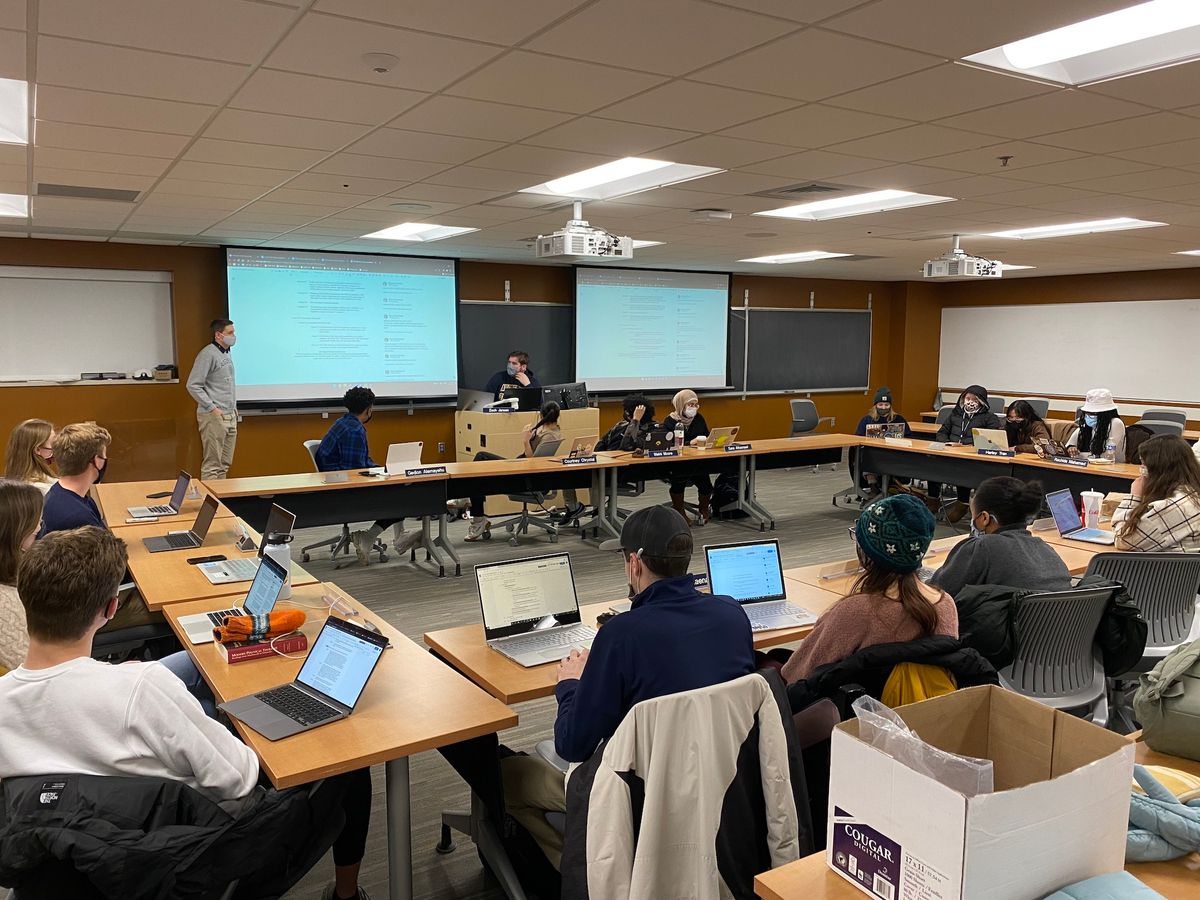ASA considers cutting Lyft program budget

The Augustana Student Association is working through potential changes to the Viking Lyft program after spending nearly $24,000 on it during 2021.
The ASA Transportation and Technology task force, chaired by senator Raena Brendtro and tech director Zach Jansen, met over interim to look into spending, statistics and student use of the program. The $23,912 spent covered 2,731 rides for the 233 students who used the program.
The numbers were reported at the Feb. 9 ASA meeting. There was debate over whether the program is financially sustainable and if there need to be limits put in place to ensure ASA can continue to fund it. ASA plans to keep the program operating as normal while members discuss the logistics.
The program as it operates now gives each student $10 off six rides per month. Jansen said ASA discussed cutting it back to two or four rides per person to stretch the money further per student.
Some senators noted that limiting the program would take it away from students who depend on it, which was a big reason for the program when it began in February 2021.
Brendtro and senator Lauren Teller conducted interviews about the Lyft program with Heather Reed, assistant director of international programs, and several international students. Brendtro and Teller asked a variety of questions about the program, including whether students use the program and if they think it should continue.
Brendtro said students expressed that they “greatly benefitted” from the Lyft program, and it helped alleviate frustrations with public transportation in Sioux Falls.
“The interviews confirmed the vitality of this program,” Brendtro said.
Part of the debate in ASA dealt with reasons for which students use the Lyft program. While the program is meant to cover rides of all kinds, the task force found that though students were using it for transportation to and from work or the grocery store, it was also frequently used when returning from downtown on weekends.
“We realized a lot of students are using this as a safe ride home from the bars at night,” Brendtro said. “Lots of rides in the middle of the night on a weekend, definitely not the time that you would go grocery shopping.”
Brendtro said there was talk about restricting hours in which students can use the Lyft program to ensure it’s being used for more essential, daytime activities.
“It poses the question ‘Should we still be giving a safe ride home?’ because that is a genuine concern,” Brendtro said. “I think it’s pretty fair to ask that we do that. It’s just a matter of whether it’s in the budget.”
Senator Henry Van Bemmel said he agrees with Brendtro on safe rides for students.
“Students are doing the right thing by making use of this program if it’s not safe for them to drive themselves home,” Van Bemmel said.
One idea the task force proposed is to offer fewer rides per student and give students without cars a code for more discounted rides per semester. This would cut back on spending while still providing essential transportation for students who need it.
While Van Bemmel agrees that using the Lyft program for safe rides home is a good use of the program, he said that he would be “more okay” with restricting rides from downtown than rides to or from work if restrictions are necessary.
“If the time comes and we realize we cannot serve both of these goals equally, we’re going to have to pick one over the other or reduce it for everybody,” Van Bemmel said.
Overall, Jansen said that until ASA determines the financial sustainability of the program, they should continue to fund it.
“As long as people are using it, and it’s something that people benefit from and enjoy that ASA provides, I don’t see a problem with it,” Jansen said.



